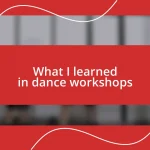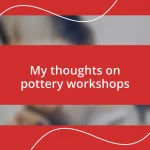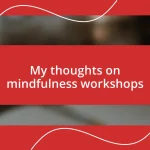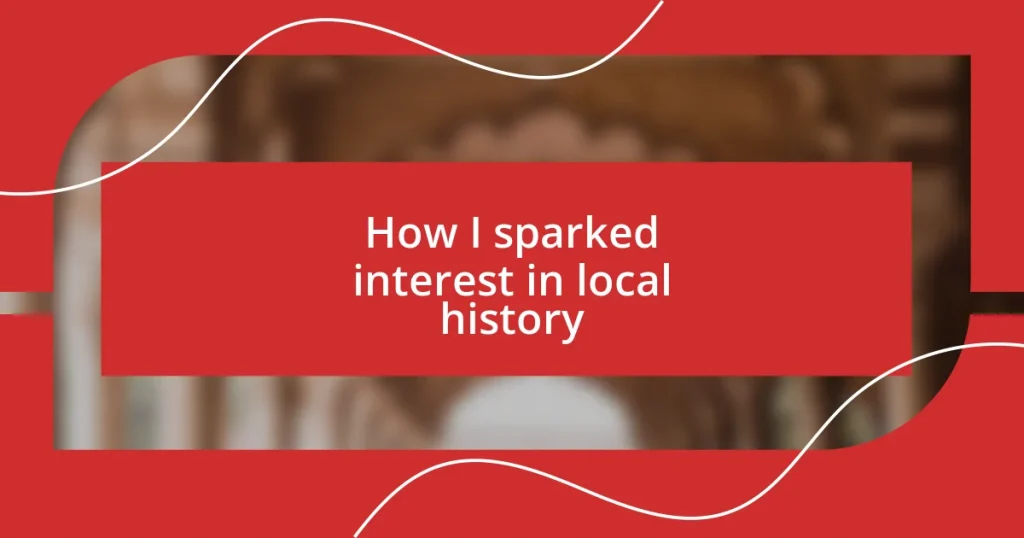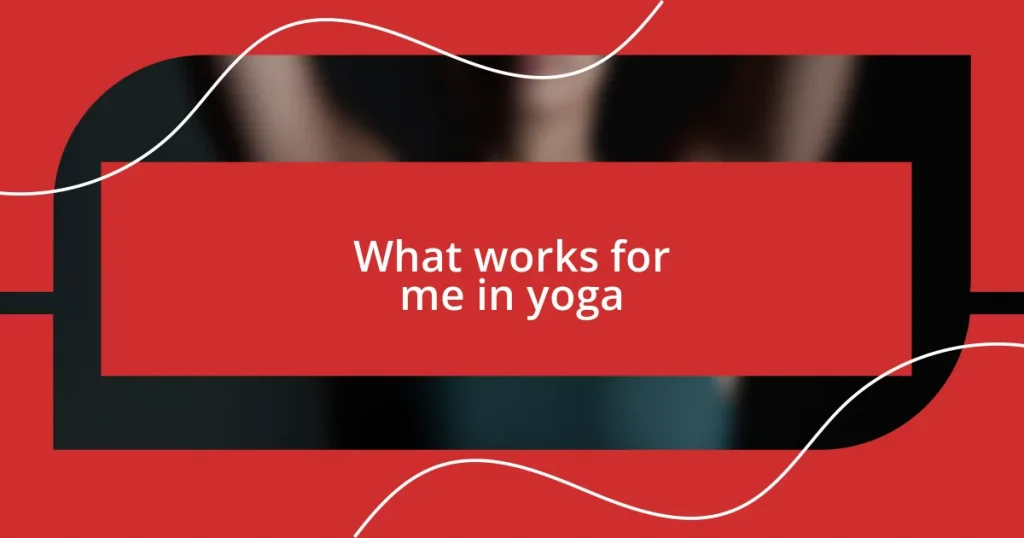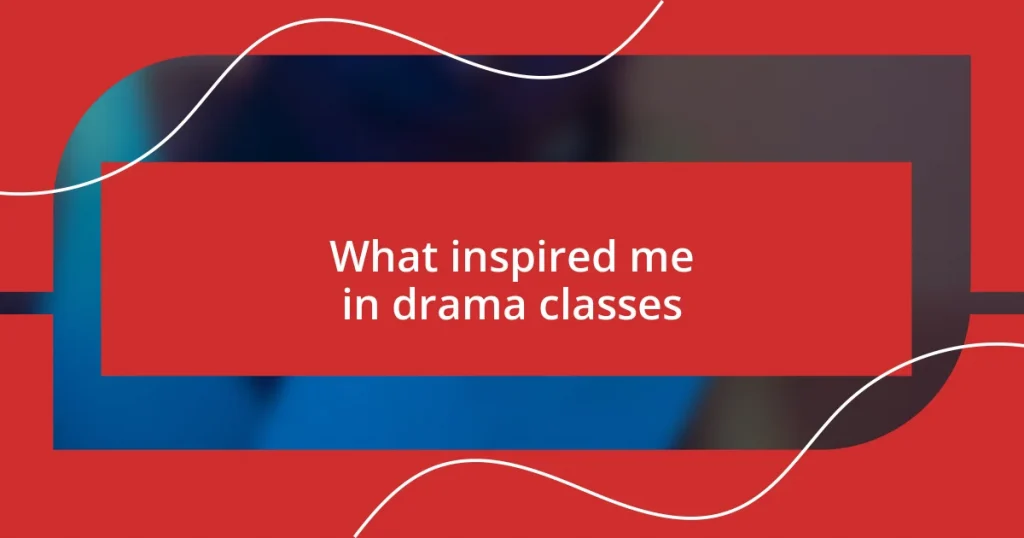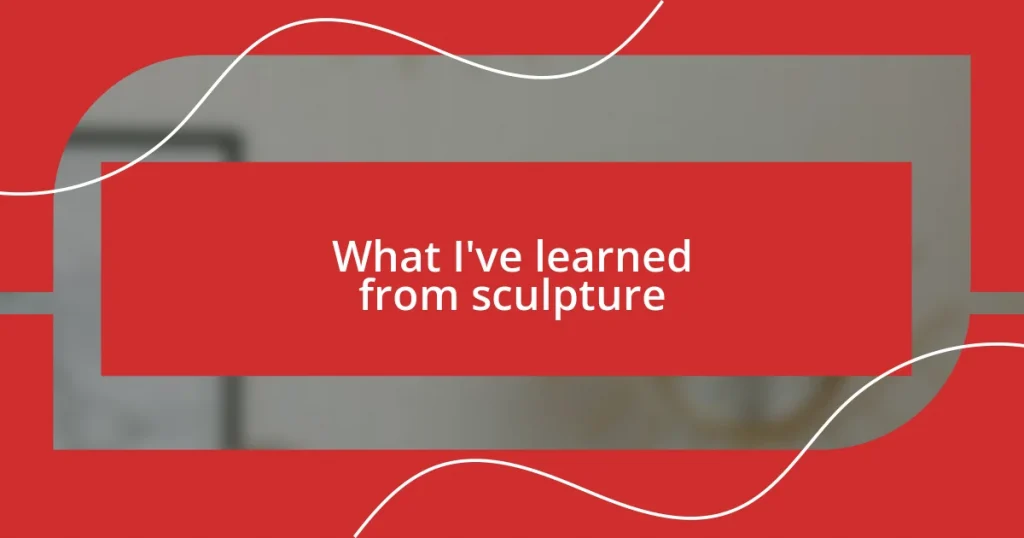Key takeaways:
- Understanding local history strengthens community identity and fosters a sense of belonging through connections to shared narratives and experiences.
- Engaging the community with interactive events like heritage festivals, walking tours, and collaborative projects promotes appreciation and preservation of local history.
- Utilizing digital tools, such as social media, podcasts, and interactive maps, enhances outreach and makes local history accessible and engaging for diverse audiences.
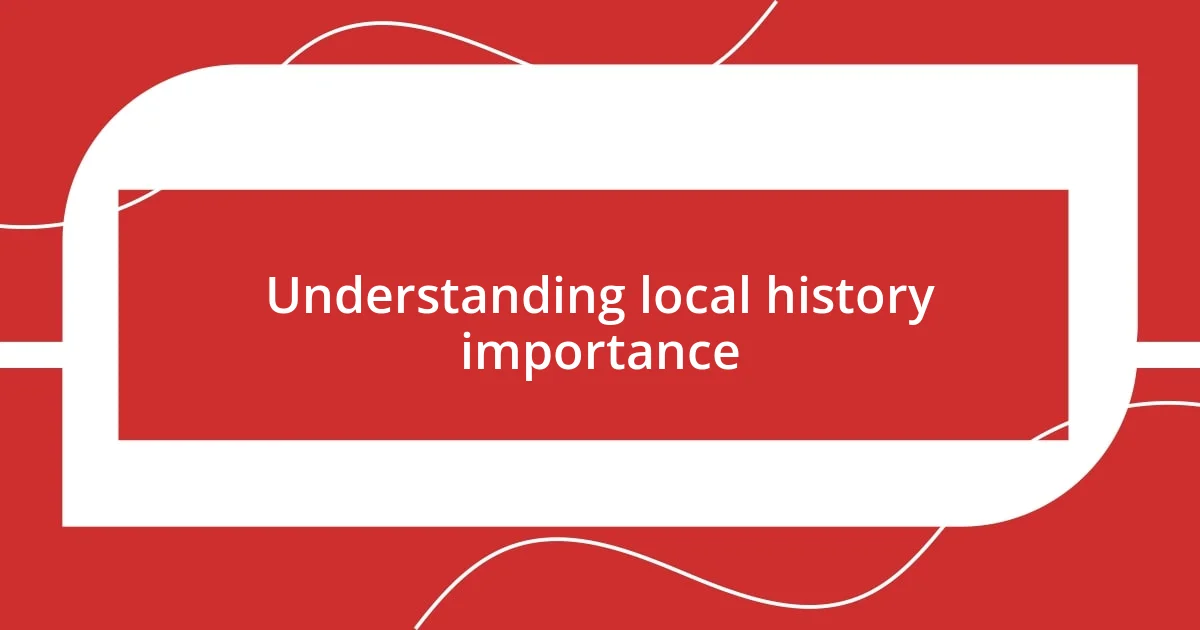
Understanding local history importance
Understanding the importance of local history is crucial because it helps us make sense of our own identities. I remember the first time I stumbled upon a photograph of my hometown from decades ago. It sparked a realization that we’re all part of a larger narrative, one that can often shape our everyday lives in profound ways. Have you ever wondered how the places you pass by every day might have stories waiting to be unearthed?
Local history offers a tangible connection to our past, reminding us that communities are built on layers of human experience. During a visit to a local museum, I found myself captivated by a display about the neighborhood’s founding families. Their struggles and triumphs echoed in my own life, making me think: what stories are hidden in my own family history? It’s fascinating how digging into the past can reveal threads that connect us all.
Moreover, understanding local history fosters a sense of belonging and stewardship. When I volunteered for a historical preservation project, I felt a deep connection to my community as we restored a landmark that had stood for generations. It made me ask myself: how can we honor the legacies left for us? We have a responsibility to keep these stories alive, not just for ourselves, but for future generations who will call this place home.
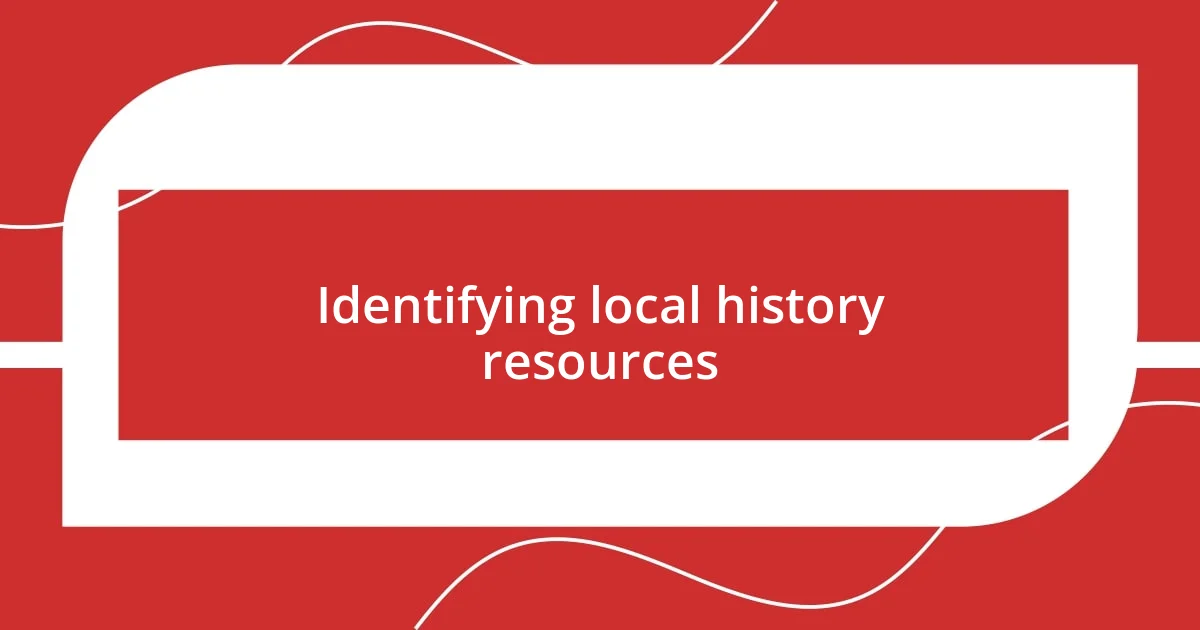
Identifying local history resources
Identifying local history resources can seem overwhelming at first, but I’ve found that a little exploration goes a long way. When I began my journey, I started with the local library—an often underappreciated treasure trove. I discovered archives filled with old newspapers, maps, and even personal letters that painted vivid pictures of the community’s past. Have you ever browsed through old records? There’s something electrifying about holding pieces of history in your hands.
Local museums and historical societies played a pivotal role in my discovery too. Many of these organizations offer workshops and guided tours that not only inform but also inspire curiosity about the local heritage. I remember attending a lecture at a nearby historical society where the curator shared fascinating anecdotes about my town’s industrial past. It was like stepping back in time. Connecting with passionate individuals who share their love for local history makes the journey even richer, don’t you think?
Lastly, online resources have become indispensable in my quest. Websites, online databases, and social media groups dedicated to local history enthusiasts provide platforms for discussion and collaboration. I’ve joined several Facebook groups where members share their discoveries and even organize local history walks. It’s an incredible way to bond with others who are just as eager to unveil the stories hidden in our surroundings.
| Resource Type | Description |
|---|---|
| Local Libraries | Archives with old newspapers, maps, and personal letters. |
| Museums & Societies | Workshops, guided tours, and lectures offering insights into local heritage. |
| Online Resources | Websites and groups for discussions, collaboration, and sharing discoveries. |
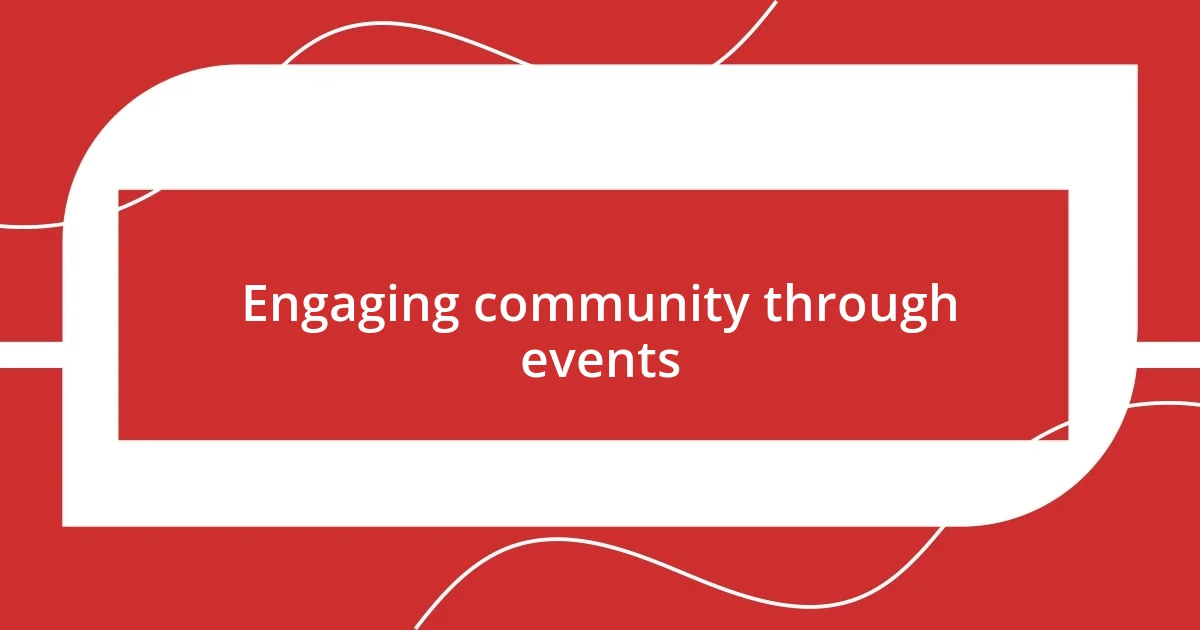
Engaging community through events
Engaging the community through events can ignite a deeper appreciation for local history. I vividly recall when our town organized a heritage festival, blending live music, food from local vendors, and historical reenactments. It wasn’t just a fun day out; it was a powerful reminder of our roots. People rallied together, sharing stories that went beyond dates and facts, creating lively discussions about our collective past.
Here are a few types of events that can foster community engagement with local history:
- Heritage Festivals: Celebrate local culture with food, music, and historical presentations.
- Walking Tours: Lead community members through significant historical sites, sharing anecdotes and little-known facts.
- Family History Days: Encourage residents to share their family stories, creating a tapestry of interconnected local narratives.
- Workshops and Lectures: Host experts to discuss various aspects of local history, inviting Q&A sessions to foster dialogue.
- Volunteer Projects: Organize cleanup and restoration days for historical landmarks, engaging participants in hands-on preservation.
I remember volunteering for a community mural project that depicted key historical events. As we painted, conversations flowed, and neighbors began to share their family’s stories tied to the imagery we were creating. It felt like we were stitching together a collective memory—and that connection transformed us from mere residents to invested caretakers of our history. These experiences challenge us to think: how can we continue to weave our own stories into the fabric of our community?
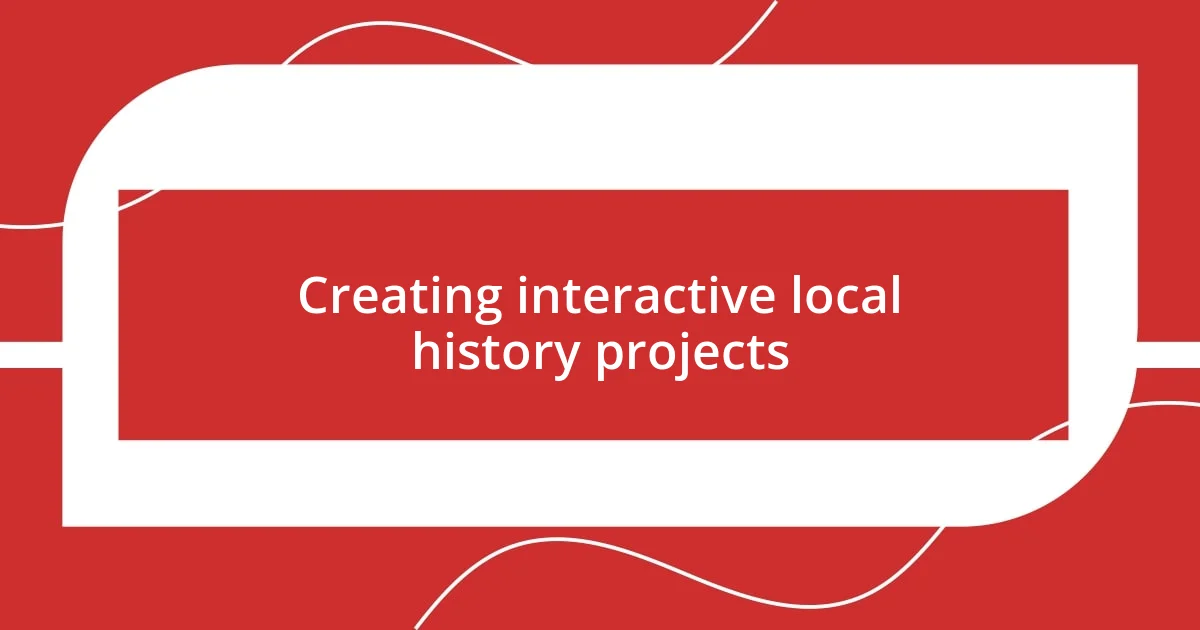
Creating interactive local history projects
Creating interactive projects can truly elevate the engagement of local history. One memorable experience for me was when I helped develop a scavenger hunt that led participants to historical landmarks in our town. The excitement was palpable as families raced from one site to another, piecing together clues that revealed hidden stories. Have you ever seen children light up when they discover that their own backyard holds secrets from the past? That sense of connection is something I cherish deeply.
Another effective method is digital storytelling, where I partnered with local schools to create videos showcasing students’ interpretations of historical events. Watching those kids dive into research and then express their findings creatively was heartwarming. Many of them unearthed stories their own families had kept secret for generations. It made me think—how many untold histories are waiting to be discovered just beneath the surface of our conversations?
I’ve also found success in community art projects that involve residents crafting pieces inspired by local history. One particularly rewarding project was when we collaborated to create a mural illustrating pivotal moments in our town’s timeline. As we painted together, people from different backgrounds shared personal stories that inspired various elements of the mural. Can you imagine how those shared experiences can transform a simple wall into a living tapestry of history? Such interactive initiatives not only foster learning but also create a strong bond among participants, reminding us that our collective past shapes who we are today.
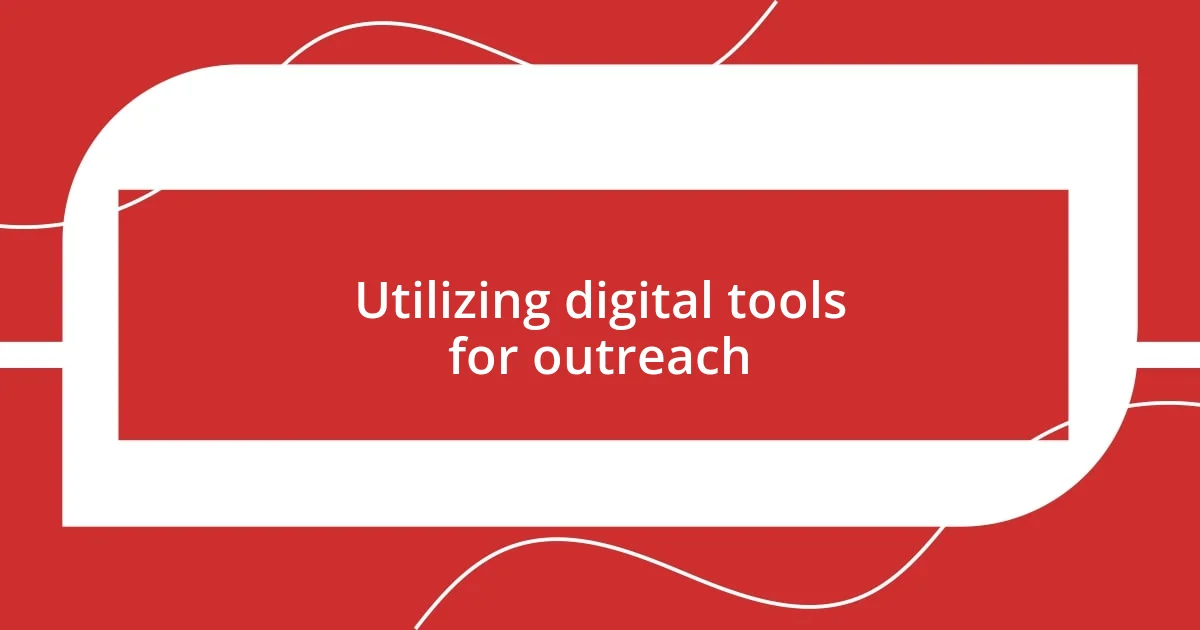
Utilizing digital tools for outreach
Utilizing digital tools for outreach has been a game changer in sharing local history with the community. I remember when I first used social media to launch a virtual tour series of our town’s historic sites. The response was incredible! People from all over joined in, sharing their thoughts and even their own experiences at the locations we explored. It was amazing to see how a simple Facebook Live event could spark discussions and even reconnect people to their pasts.
One intriguing tool that I’ve embraced is the use of podcasts. I decided to create a series featuring interviews with local historians and residents who shared their fascinating stories. Listening to those interviews felt like gathering around a campfire, where each story wove a thread into our community fabric. Have you ever thought about how comforting it is to hear a familiar voice recounting experiences from decades ago? That’s the magic of storytelling—it invites us to step into the shoes of those who walked our streets long before us.
Additionally, I’ve found great success with creating interactive maps using online platforms. By highlighting significant landmarks and adding personal anecdotes, visitors can literally see and feel the history beneath their feet as they stroll through town. I often photo-documented my own explorations, pairing images of historical sites with personal reflections. When people realized they could retrace my steps, I saw curiosity bloom. Isn’t it incredible how digital tools can bridge generations and remind us that history isn’t just in books; it’s alive, waiting to be discovered and shared?
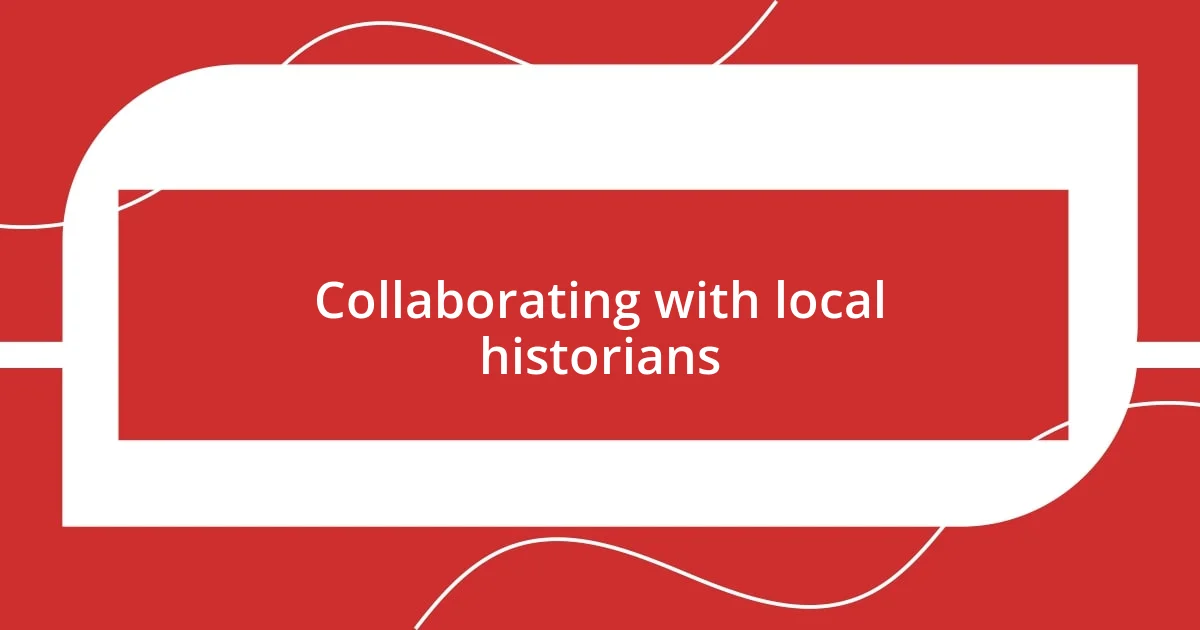
Collaborating with local historians
Collaborating with local historians can spark a newfound appreciation for our community’s narratives. I recall the time I joined forces with a local historian for a series of workshops. The stories he told were mesmerizing, filled with details that I had never encountered before. It struck me how each tale, from forgotten families to lost traditions, brought a unique thread to the fabric of our local history. Have you ever wondered what hidden gems might emerge from such collaborations?
In one memorable project, we organized a public lecture series where local historians shared their research on specific events that shaped our town. I still remember the enthusiastic crowd, eagerly absorbing every word, their faces lighting up with recognition and curiosity. It was during these moments that I realized the power of shared knowledge—each participant left with a greater understanding of our collective past. Isn’t it remarkable how history can foster a sense of belonging in a community?
One of my favorite experiences was when we worked together to curate an exhibition at our local library. As we unearthed artifacts, discussing their significance and relevance, it felt like we were piecing together a puzzle of our shared humanity. Many visitors left with newfound insights, often sharing how these artifacts resonated with their own families’ histories. It confirmed my belief that collaborating with local historians not only enriches our understanding but also deepens our connections to one another. Have you ever felt that spark of connection? It’s those moments that remind us why history matters.






